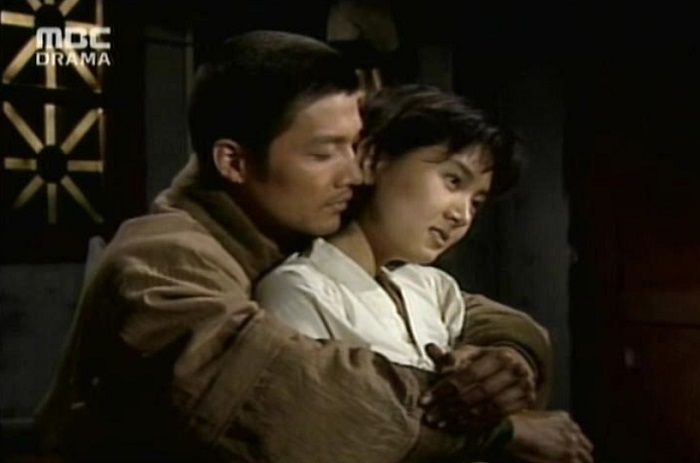
The 36-episode TV series ‘Eyes of Dawn’ aired on MBC in 1991. It starred Choi Jae-sung (left) as the main male character Choi Dae-chi, and Chae Shi-ra as the main female character Yoon Yeo-ok.
From Oct. 7, 1991, to Feb. 6, 1992, one particular TV series attracted many eyes, glued to their sets at home in its given time slot. It’s the 36-episode drama “Eyes of Dawn,” aired on MBC, often dubbed as the “national drama” of the time.
The production was based on a 10-volume namesake novel written by Kim Seong-jong. It's not a mere love story between a man and a woman. It captures historical events that took place in modern Korean history and the love between a man and a woman that survived during turbulent phases of history.
The TV series is known for the whopping viewer numbers that it recorded in the history of Korean TV. It took two years and four months to film all the episodes. It cost some KRW 7.2 billion to make. There were 21,000 people in the cast. Over 44 percent of the nation, on average, watched each episode. Finally, it had a viewership rating of 58.4 percent, one of the highest ever. It was, literally, the prelude to today's era of blockbuster drama TV shows.
The epic drama spans Japanese colonial times through to the Korean War (1950-53). It tells the story of a love triangle that involves two male leads -- Choi Dae-chi and Jang Ha-rim -- who fall in love with an ill-fated woman, Yoon Yeo-ok.
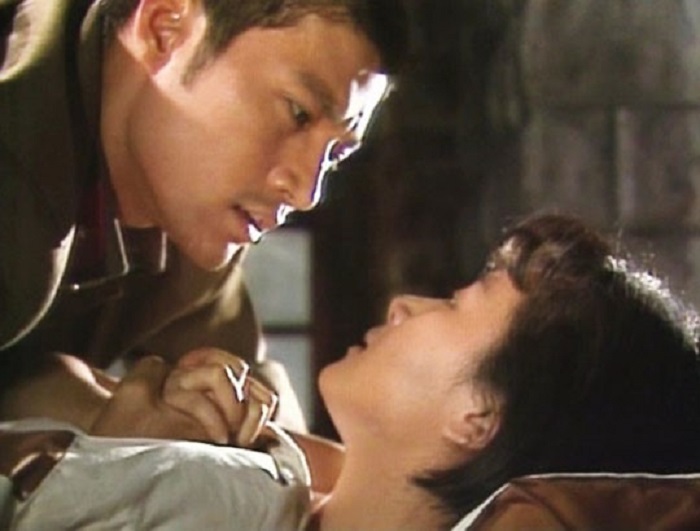
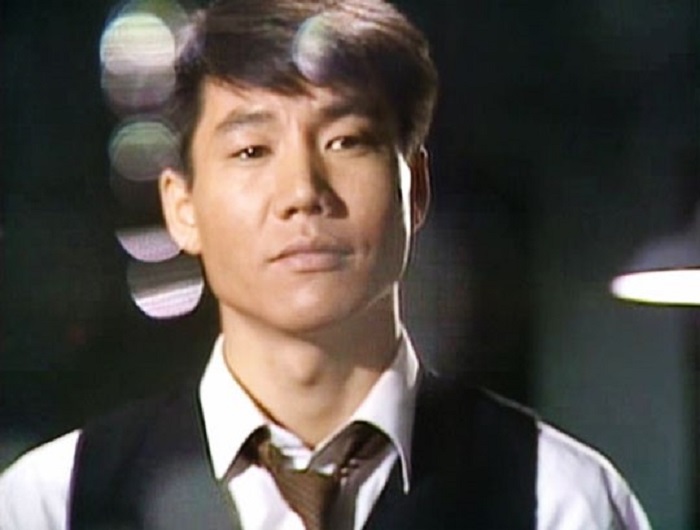
The 1991 TV show ‘Eyes of Dawn’ hit the highest then-seen viewership ratings of 58.4 percent, attracting the most viewers among competing shows that aired at the same time. The show stars as the main characters actors Choi Jae-sung (top, left), Park Sang-won (bottom) and actress Chae Shi-ra (top, right).
Yoon Yeo-ok, the female lead, was forced into sexual slavery, becoming one of the so-called “comfort woman,” by the Japanese imperial military at the age of 17. Choi Dae-chi, the male lead, was forcibly drafted into the imperial army as a student solider when he returned home from China, where he attended college. Yeo-ok met Dae-chi while she was "serving" the soldiers in his unit in Nanjing, China. Both in despair amid World War II, the two fell in love and lean on each other. The fact that Yeo-ok has gotten pregnant with his child gives the couple a reason to survive.
Ordeal awaits them, however. Dae-chi’s unit has to leave China, which separates the couple. Hearing news that the Japanese military was increasing impressment of more "comfort women" to be dispatched to Saipan, Yeo-ok decides to be part of that, thinking that she might be able to see Dae-chi there. Yeo-ok encounters a Korean man, named Jang Ha-rim, instead, who works there as a medic for the Japanese troops. The new man Ha-rim realizes that she’s pregnant and tries to protect her and slowly falls for her.
Learning about the Japanese military's plans to wage germ warfare, Ha-rim chooses to desert his unit and joins the Allied forces. Yeo-ok and Ha-rim then work as agents for a U.S. intelligence agency and engage in numerous operations. After all the ordeals they survive together, the pair decides to get married.
One day, Dae-chi shows up before them. As it turns out, he has been working as a spy for many years for the band of soldiers that would later become the North Korean government. Yeo-ok hesitates between Ha-rim and Dae-chi, and chooses to be with Dae-chi, whom she really loved. She helps him by providing some information from the U.S. intelligence agency. She feels tortured by guilt toward Ha-rim, though.
Then the Korean War breaks out. Yeo-ok loses her son in the war and returns home, spending every day in profound grief taking care of war orphans. Dae-chi, meanwhile, the chief commander of the North Korean Partisans in South Korea, leads espionage activities around Jirisan Mountain. Ha-rim becomes part of an operation to subjugate North Korean spies.
Dae-chi gets severely injured in combat and Yeo-ok finds him covered with cuts and bruises. That’s when Yeo-ok gets shot and falls as both Dae-chi and Ha-rim look on. Yeo-ok dies in Dae-chi’s arms. Dae-chi, too, soon follows her.
A monologue from the lone survivor of the love triangle, Ha-rim, brings the drama to an end.
“That winter, I buried the woman I loved and one friend who I could never hate, somewhere near an unknown valley near Jirisan Mountain. They're all gone but me. I remain here for a reason. It is, probably, hope. Only those who don’t give up hope can live through this heartless world.”
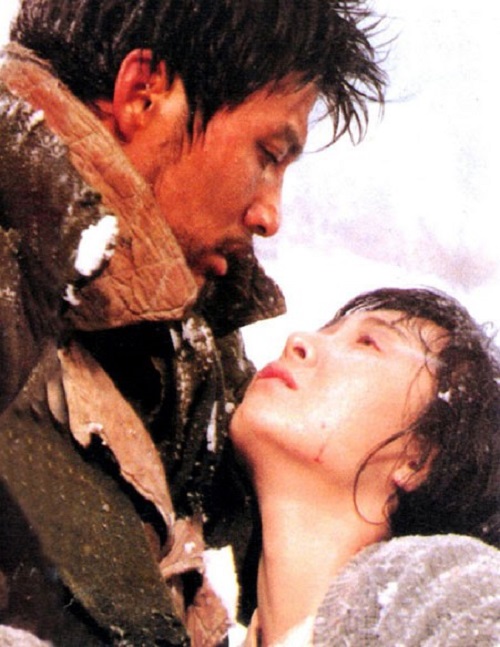
The final scene from the MBC drama ‘Eyes of Dawn’ features female lead Yoon Yeo-ok breathing her last in Dae-chi’s arms.
The first 20 episodes of the drama were filmed outside Korea in China and Saipan. Grand and exotic scenes added a visual impact to the drama, satisfying the viewers’ sense of sight. In the following 16 episodes, the drama developed in earnest, with its dynamic plot line and magnificent images, factors that are considered to have made the production successful.
The soap opera is also believed to have revealed the then rarely-discussed “comfort women” issue. When it was aired, critics lauded the drama as capturing raw phrases of modern and contemporary Korean history in the lives and loves of the three characters.
Among the best scenes is when Choi Dae-chi stepped on a barbed wire fence to grab and kiss Yoon Yeo-ok. The kiss scene was filmed in a military camp in Harbin, Heilongjiang Province, China, amid as many as 3,000 Chinese lollygaggers. Another talked-about scene is when the hero, starving to death, stuffs a living snake into his mouth and eats it whole in a barren plain in Myanmar. The gruesome image has lived on in many viewers’ memories after more than 20 years.
“If it wasn’t for ‘Eyes of Dawn,’ would I be where I am now? Probably not,” said actress Chae Shi-ra, the then 24-year-old rookie who rose to stardom with her role in the drama. Actor Choi Jae-sung, who acted as the male lead, reminisced, “The drama was the most important opportunity in my acting career. It was the best of the best for me.”
|
Guryongpo in Pohang, Gyeongsangbuk-do Province - The Guryongpo Modern Culture and History Street (구룡포 근대문화역사거리) 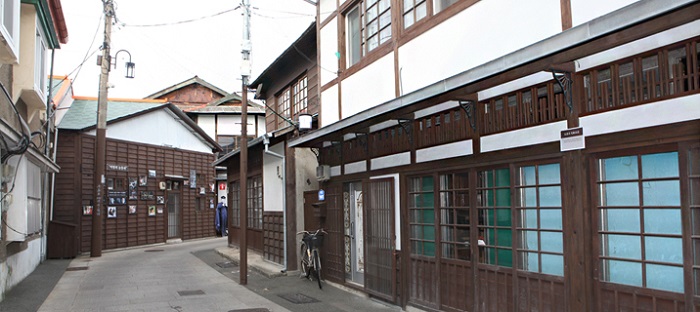
The Guryongpo Modern Culture and History Street in Guryongpo, Pohang-si, Gyeongsangbuk-do Province, is home to more than 80 Japanese-style buildings. There is a small town, called Guryongpo (구룡포, 九龍浦), in Pohang-si, Gyeongsangbuk-do Province. The name of Guryongpo stems from a legend where nine dragons from the East Sea, during the reign of Silla King Jinheung, ascended to heaven from the town’s port. Guryongpo has a street, known as the “Guryongpo Modern Culture and history Street,” which used to be where more than 1,000 Japanese resided in the 1910s. The street, 457 meters long, has kept intact the Japanese homes for more than 100 years. It’s one of the most popular tourist spots in the port city. Some major scenes from the drama were filmed in one of the Japanese houses here, a home which has window frames with Mount Fuji patterns. 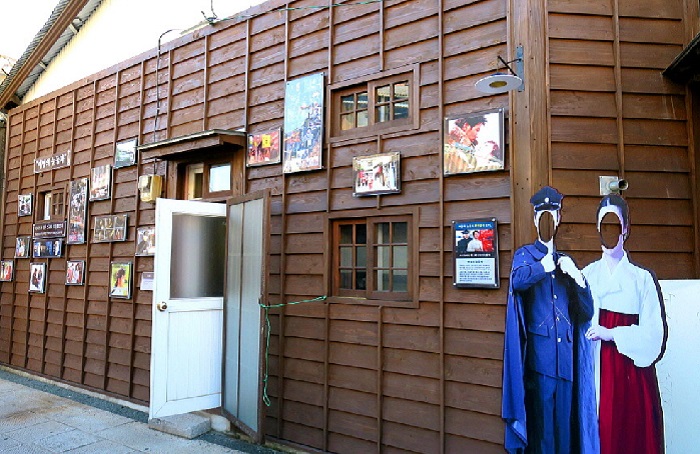
Some major scenes were filmed at one of Japanese-style buildings along the Guryongpo Modern Culture and History Street in Guryongpo, Pohang-si, Gyeongsangbuk-do Province. The house welcome tourists with photos that feature some scenes from the drama. In 1906, more than 80 Japanese fishing ships from Kagawa Prefecture travelled all the way up to Guryongpo to catch schools of fish, like mackerel. Japanese fishermen who accumulated wealth with ship building, ship delivery and the canning industry, started to build their homes along the street. In 1932, the number of households reached more than 300, with 1,161 residents. You can see the renaissance in Guryongpo of those times with the surviving Japanese homes. About 80 homes remain here today. Restaurants that serve Japanese noodles and tea are lined up for the tourists. ※ How to get there: Take a KTX high-speed train for Pohang from Seoul Station. Take bus No. 210 from Pohang Station and get off at the Guryongpo Modern Culture and History Street. It takes about one and a half hours. |
By Sohn JiAe
Korea.net Staff Writer
Photos: MBC, Korea Tourism Organization
jiae5853@korea.kr